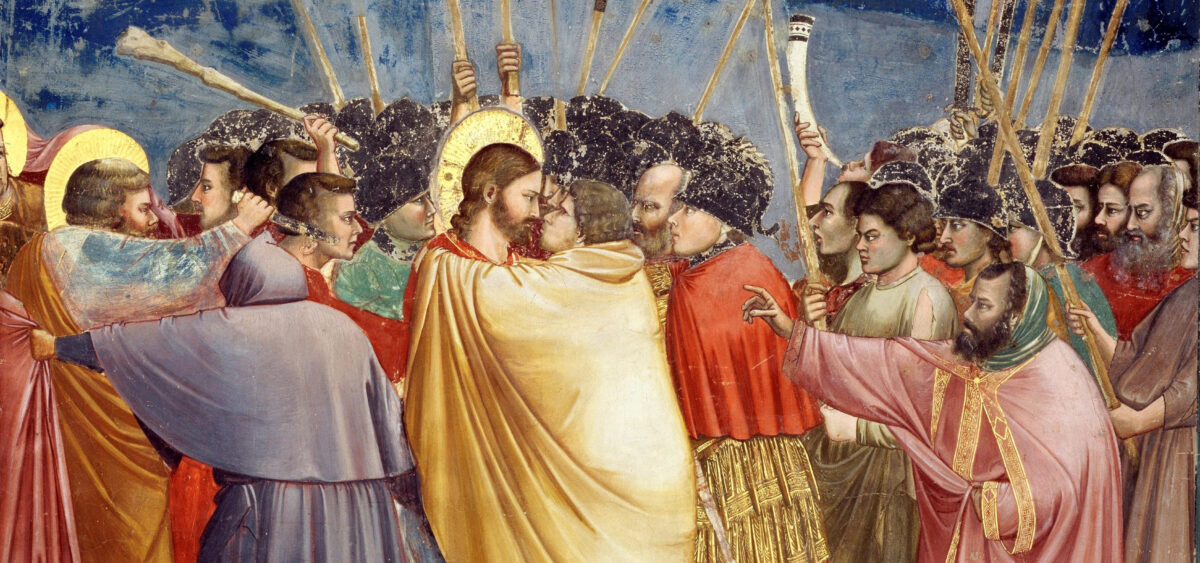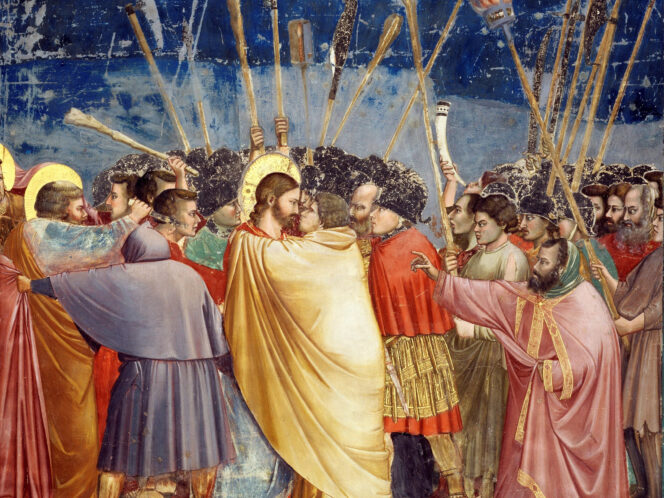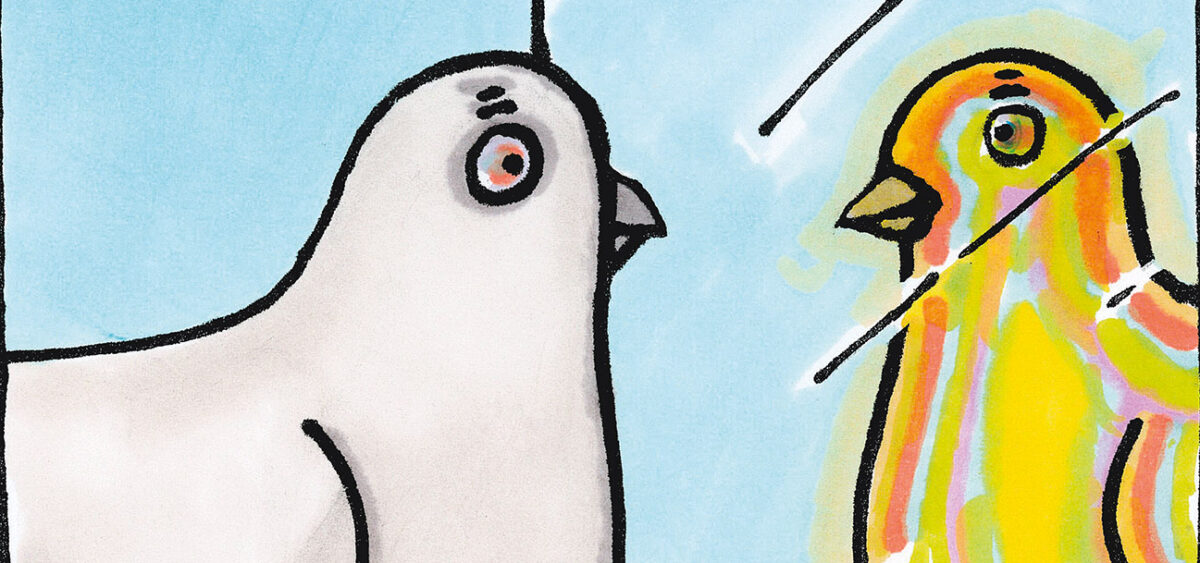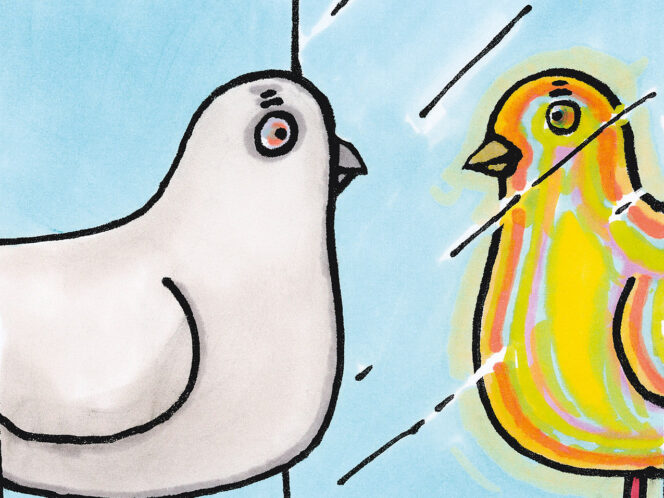
A color that induces euphoria in the brain also has a sinister side.
A painting by Giotto titled The Kiss of Judas hangs in the Scrovegni Chapel in Padua, Italy. It depicts a crowd of intertwined figures in multi-colored cloaks—but one stands out from the rest, brightly distinguished by a patch of dense gold. It is Judas, draped in a bright yellow cloak, placing his treacherous kiss on Jesus’s cheek. Nothing else in this painting matters more than this almost neon-like robe and the color yellow—used so dramatically that Giotto must have had important reasons for doing so.
If we wish to tangibly convey an imp








